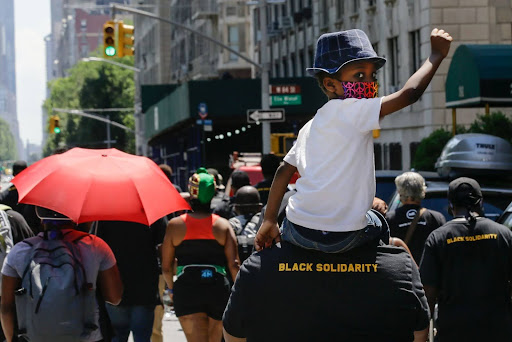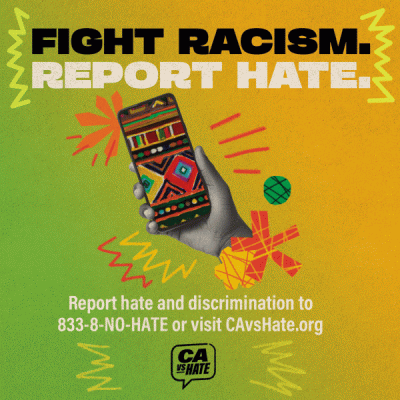
By Emily Kim Jenkins, Contributing Writer
In 1990, Dan Lungren narrowly won his election for California’s Attorney General. Over half of San Diego County residents voted for him, but he defeated Bay Area Democrat Arlo Smith by less than half of one percent of the total statewide vote.
Lungren, California’s last Republican Attorney General to date, is perhaps best known for his “tough-on-crime” approach, which he used to dedicate more resources to combating hate. In 1995, he published the state’s first ever version of the annual hate crime report – a document recording demographics involved in hate crimes.
“We have been pushing for the attorney general to begin this data collection for some time now,” Tzivia Schwartz, then-Western States Counsel for the Anti-Defamation League, told the LA Times in 1995. “We are thrilled it’s finally happening but we are concerned it took so long.”
The “Hate Crime Statistics Act,” or H.R. 1048 of the 101st Congress (1989-1990), directed all states to begin recording and publishing these numbers.
Like many other civil rights directives, recording hate as a significant concern of law enforcement was not a straightforward path. For one, it increased transparency into the trends and patterns that concern local communities, which required additional training and funding, but secondly (and perhaps more haunting to the legacy of combating hate in America), it required the government to determine what hate was and who could experience it.
Defining a hate crime
The definition of a hate crime has evolved dramatically since the term was first used federally in 1968. Initially, it criminalized any actions that injured or intimidated someone based on their race, color, religion or national origin. In order to be considered a hate crime, the victim had to be participating in a “federally protected activity,” such as voting, serving on a jury or attending a public school.
As the law exists today, hate crime biases are categorized by type of protected class – as the U.S. Department of Justice lists them, those classes are color, ethnicity, disability, gender, gender identity, race, religion and sexual orientation.
Roots in anti-Black hate
Anti-Black bias hate crimes were the reason laws defined hate crimes in the first place. Lynchings throughout the Jim Crow South which were not adequately investigated after the Civil Rights Movement, which inspired the first federal hate crimes law. This law, the Civil Rights Act of 1968, allowed the prosecution of those specifically looking to intimidate the African American community, according to the Southern Poverty Law Center.
Racially-motivated bias crimes are regularly the most common type of hate crime reported. The highest proportion of these crimes is anti-Black/African American, both statewide and locally. As of May 2024, according to the San Diego Sheriff’s Office, no anti-Black hate crimes had been reported so far this year.
Gender and sexuality
Before the Hate Crime Statistics Act was passed, an amendment was made to distinguish that “nothing in this Act creates a right for an individual to bring an action based on discrimination due to sexual orientation.” It also prohibited any funds from its passage to be used to “promote or encourage homosexuality.”
That was 1990. To contrast, in 2023, the term “anti-homosexual” was changed to include a broad spectrum of sexualities with a new label, “anti-LGBTQ+” for the first time.
In 2009, then-President Barack Obama signed into law the Shepard-Byrd Act, which “expanded the existing hate crime law to include crimes motivated by a victim’s actual or perceived gender, sexual orientation, gender identity or disability… It gave the federal government greater flexibility to prosecute hate crimes that local authorities choose not to pursue,” the Southern Poverty Law Center summarized. The FBI began using and recording these categories in 2013.
The expansion of religion categories
Prior to 2015, the only religious-bias events being recorded were anti-Jewish, anti-Muslim, ant-Catholic, anti-Protestant, and an all-encompassing ‘other’ category. This changed in 2015 to include and track specific acts of hate against faiths including Sikh, Hindu, Mormon, Jehovah’s Witness and Eastern Orthodox.
An alarming rise in anti-religious crimes startled San Diego last year, likely correlated to the war beginning in Israel, prompting a wave of anti-Jewish and anti-Islamic incident reports.
Moving the needle on hate through numbers
Addressing hate requires action on many different parts – a report from the concerned citizen, proper investigation from local law enforcement, analysis and possible prosecution from a district attorney and proper report management systems from an administrative level. In order to address issues specific to a community, often, it takes members of those communities present at each level to ensure that proper attention is being paid.
The role of California Attorney General, who oversees the state Department of Justice (DOJ), was first held in 1849. The position was held by a nearly consecutive series of 31 white men (one Armenian American, George Deukmejian, held the office from 1979 to 1983).
However, diversity in the Attorney General’s office has grown. In 2010, Kamala Harris was elected as the first woman, first African American and first Asian American to hold the office. She was succeeded by Xavier Becerra, the first Latino American in the role, who then was followed by current AG Rob Bonta, the first Filipino American in the office.
The California Department of Justice employs over 5,600 people statewide and did not respond to a request for more information about the demographics of their staff.
This resource is supported in whole or in part by funding provided by the State of California, administered by the California State Library in partnership with the California Department of Social Services and the California Commission on Asian and Pacific Islander American Affairs as part of the Stop the Hate program. To report a hate incident or hate crime and get support, go to CA vs Hate.


